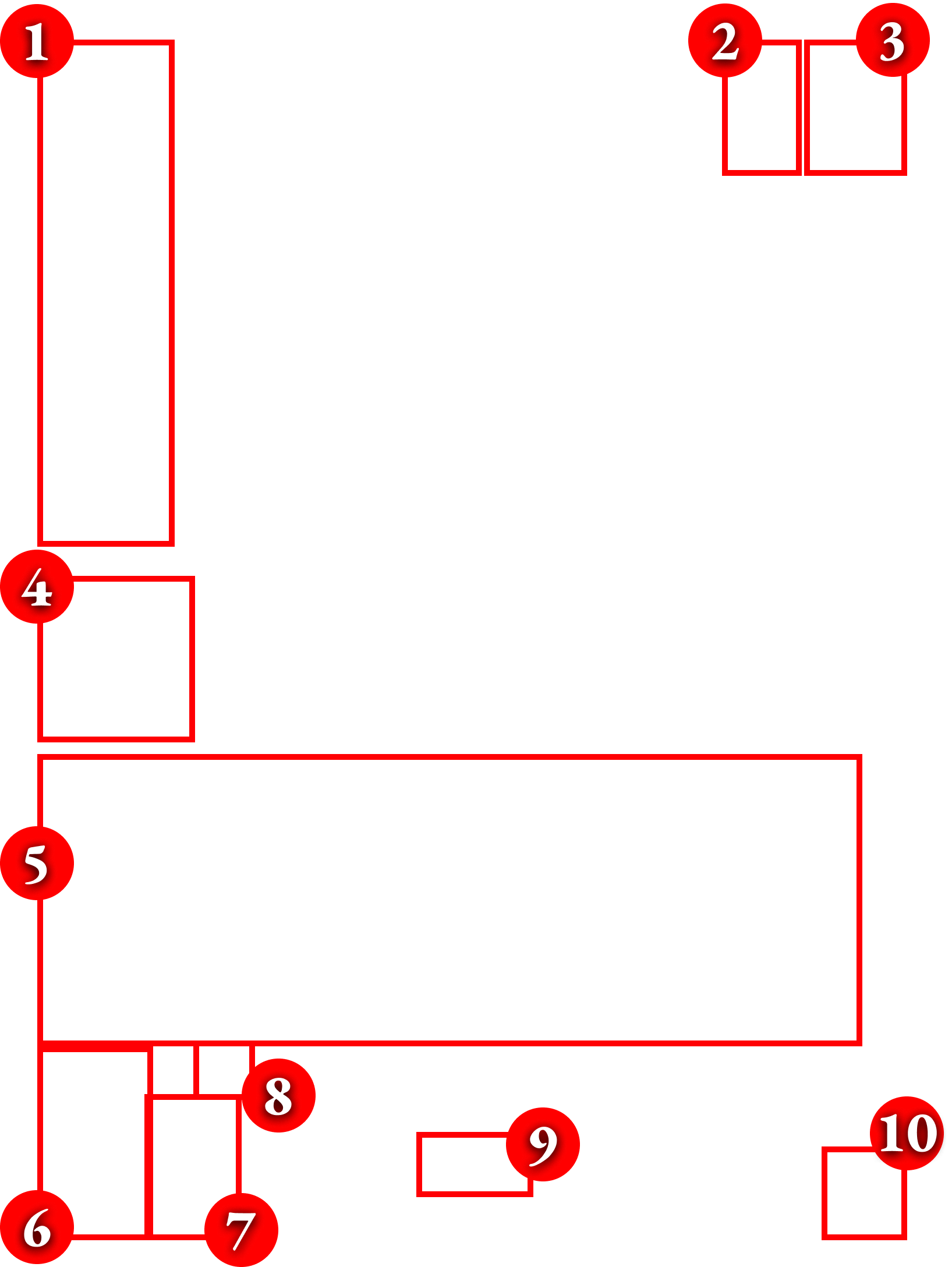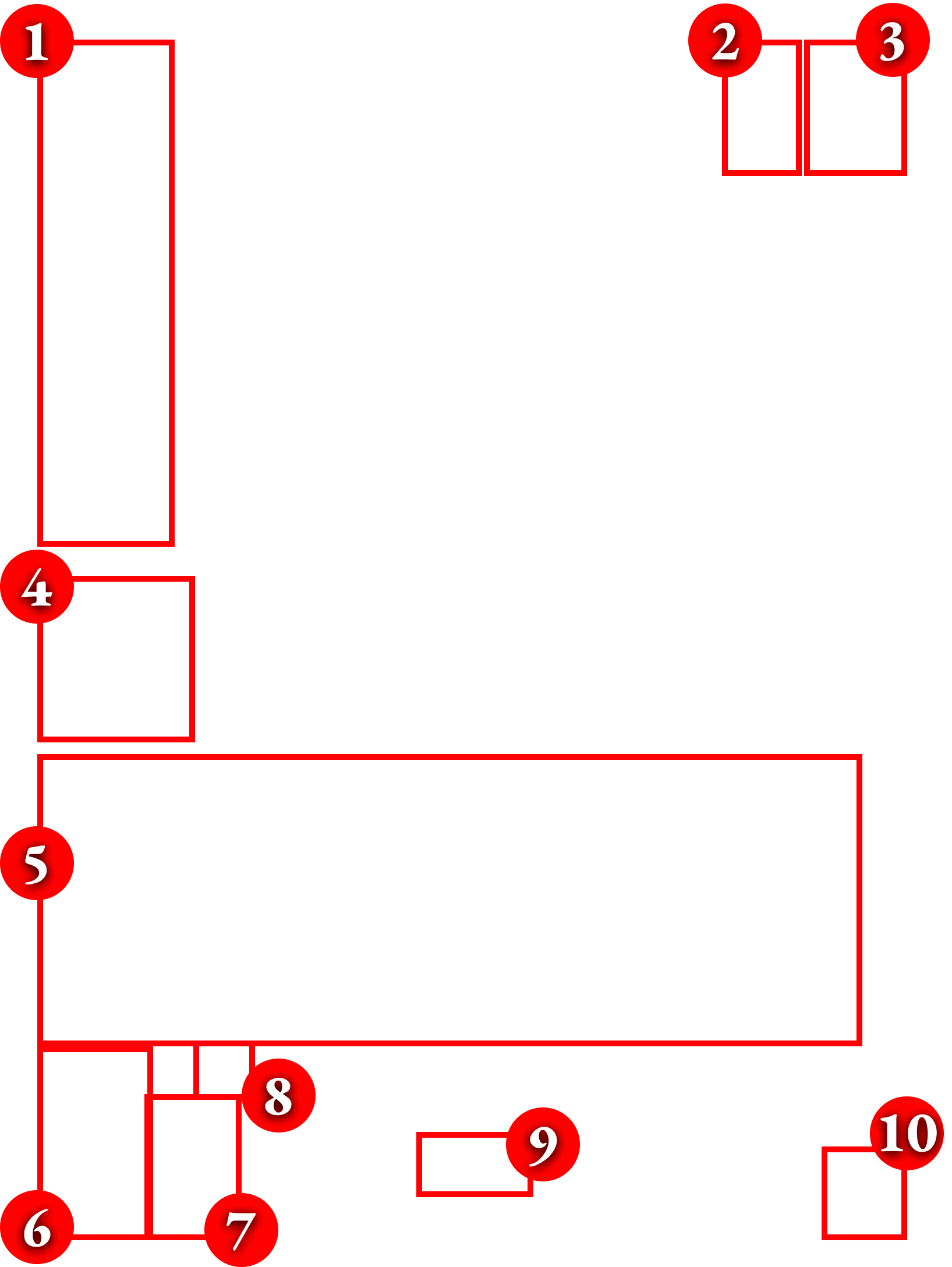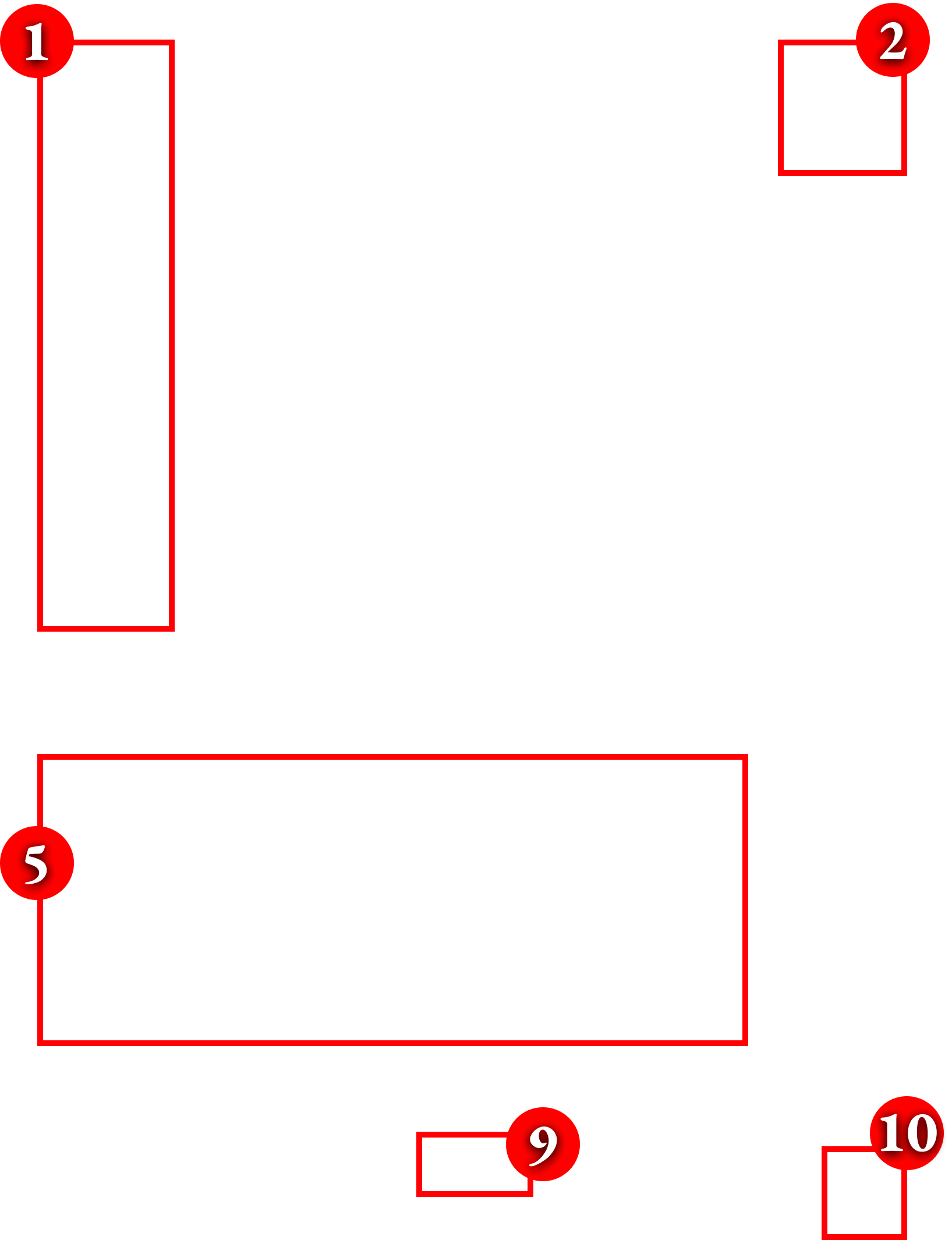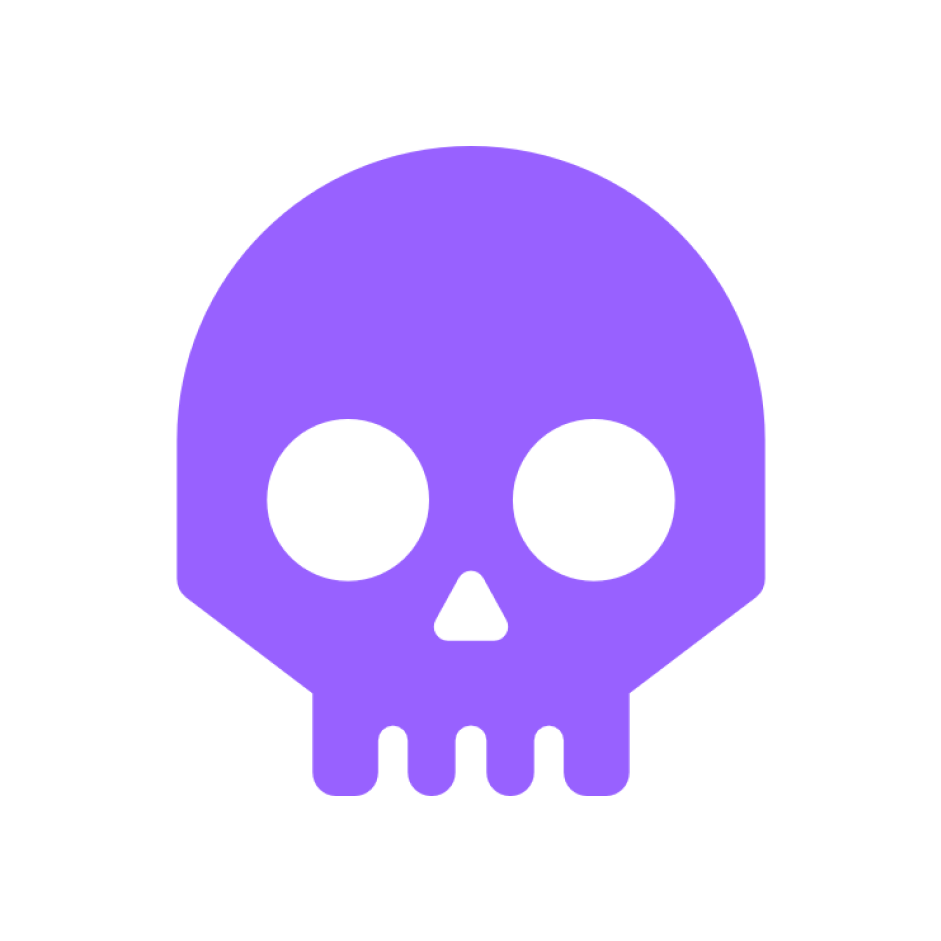RULES
CARD TYPES
In Nox Prospera there are 2 main card types: CHARACTER and SPELL. Spell cards are further divided into NORMAL SPELL and EQUIP SPELL. Character cards are instead divided into CHARACTER and FIELD RULER (a particular kind of Character with the FieldRuler ability, which lets you search and draw the FIELD RULER’s special Spell card from the Special Deck when that Character is summoned). Let’s look at these categories:
CHARACTER


FIELD RULER


NORMAL SPELL


EQUIP SPELL













HOW DOES A TURN WORK?
LET'S SEE THE PHASES OF A TURN!

The first phase of the turn is the SETUP PHASE, during which players draw 1 card from their deck and play cards from their hand. Players can summon as many cards as they want, as long as they can pay the SUMMON COST. To keep the game balanced even in tough moments when resources are low, we designed a "HYBRID SUMMON" system that combines the concepts of "MANA" and "TRIBUTES": - each turn, the player can use their "TREASURE", made of 2 free summoning gems that refresh every turn - to summon cards (Character or Spell) with a SUMMON COST higher than 2, the player must sacrifice Character cards already on the field as "tributes", based on the SUMMON COST of the card they want to play. Each sacrificed Character counts as 1 tribute and provides 1 point of SUMMON COST Therefore, the SUMMON COST of a card can range from 1 to 5, since you have your TREASURE and up to 3 tributes available (you can have at most 3 Characters on the field). When you summon a card (Character or Spell), it enters play as "NON-SACRIFICABLE": it can be used as a tribute on later turns, but not on the same turn it was summoned.
This shows that Character cards are not just combat units, but also valuable resources to summon more powerful cards. Strategic resource management and deciding when to sacrifice your own Characters to bring stronger cards into play are key elements to winning in Nox Prospera. When a card is summoned, some of its ABILITIES trigger (those that say "on summon..."). In these videos you can see the trigger of the "Predict" ability and of "FieldRuler" ability (which lets the player draw the special Spell card linked to the specific FieldRuler that was summoned).
As mentioned, a Spell can be either a non-targeted Spell or a Spell with a target (EQUIP); in the case of an equip, when summoned it must be assigned to a Character in play that meets the equipment conditions (required TAG or SKILL). Once equipped, the Character gains the abilities provided by the equipment and these remain active as long as the equipment remains assigned to that Character. Each Character can have at MOST 1 equipment assigned at a time; if you want to assign a new equipment, the previous one is discarded.

The second phase of the turn is the ATTACK PHASE, during which players can attack with their Characters. Each Character can attack once per turn (unless it has the "DoubleAttack" ability, which lets it attack twice per turn). During this phase, players must decide strategically which Characters to attack with, taking into account special abilities and the stats of enemy cards. In this video you can see an example of a DIRECT ATTACK, when a Character attacks the opponent's Life directly because there are no enemy Characters on the field to defend them (or because all enemy Characters have the "Ninja" ability, which prevents them from being targeted by attacks).
When the opponent has Character cards on the field, the player must choose which Character to target with their ATTACK. In this video you can see an example of an attack where two Characters attack a single enemy Character. During combat, both Characters deal damage according to their ATK value (Attack), but as you can see the first attack doesn't damage the enemy Character's HTH (Health) yet, it hits their GUARD instead: as long as GUARD is above 0, HTH cannot be damaged (the guard acts as a shield). Only once GUARD reaches 0 do attacks start affecting HTH. When a Character's HTH reaches 0, it is destroyed. GUARD is restored at the beginning of its owner's turn, returning to its initial value, so you should try to bring a Character's HTH to 0 as soon as possible, otherwise you'll have to break through its GUARD all over again. Even here, after the attack some ABILITIES of the Characters involved may trigger (such as "Poison"), while others trigger after damage is resolved (such as "DoubleAttack").

During the END PHASE, the player ends their turn. In this step, any effects that trigger at the end of the turn are resolved (such as GUARD being restored on Character cards, or abilities like "Training", which increases by 1 the ATK of a Character if has attacked this turn, as you can see in the showcase video).
GAME MODES


Classic 1v1
Classic duel between 2 players Win conditions: reduce the opponent's Life to 0 or deplete the opponent's deck Starting Life Points: 20 Deck + Special Deck size: 40 cards Max copies of the same card: 3 Available both as a physical and digital format (story mode + local multiplayer + online multiplayer)


Sprint 1v1
Sprint duel between 2 players Win conditions: reduce the opponent's Life to 0 or deplete the opponent's deck Starting Life Points: 10 Deck + Special Deck size: 20 cards Max copies of the same card: 3 Available both as a physical and digital format (story mode + local multiplayer + online multiplayer)


2v2
Classic battle between 4 players (2 vs 2) Win conditions: reduce the opposing team's Life to 0 or deplete the opposing team's deck Starting Life Points: 20 (shared by the team) Deck + Special Deck size: 40 cards (per player) Max copies of the same card: 3 Available in physical format, with digital support in development (local multiplayer + online multiplayer) In this mode it is possible to use the opponent's treasure and tributes, and you can also target your teammate's Characters on the field with Spells (normal or equipment)


Classic CO-OP
Battle between a team of 2 players and 1 “boss” player Win conditions: reduce the boss's Life to 0. If the boss's Life is not yet at 0 when their deck runs out, the players lose Starting Life Points: 20 (shared by the team) Deck + Special Deck size: 40 cards (per player) Max copies of the same card: 3 Available in physical format, with digital support in development (story mode) In this mode it is possible to use the opponent's treasure and tributes, and you can also target your teammate's Characters on the field with Spells (normal or equipment) The boss deck is a deck made of regularly playable cards: in the physical format it is controlled by a human player, while in the digital version it is controlled by the CPU


Boss CO-OP
Battle between a team of 2 players and a “boss” deck Win conditions: reduce the boss's Life to 0. If the boss's Life is not yet at 0 when their deck runs out, the players lose Starting Life Points: 20 (shared by the team) Deck + Special Deck size: 40 cards (per player) Max copies of the same card: 3 Available in physical format, with digital support in development (story mode) In this mode it is possible to use the opponent's treasure and tributes, and you can also target your teammate's Characters on the field with Spells (normal or equipment) The boss deck is made of special “boss” cards that are not normally playable (they have no summon cost, because each turn 1 card from the boss deck is summoned directly): at the end of each player turn, you flip the top card of the boss deck and summon it directly onto the boss's field (just like a solitaire) This mode is inspired by the “boss battles” found in action games, JRPGs and soulslike titles, where the player must face an enemy that is much stronger and built with unique mechanics compared to standard foes! This mode is also meant to offer a fun experience for players who don't want to approach the game as a TCG, but prefer something closer to a board game!


Solo CO-OP
Battle between 1 player and a “boss” deck Win conditions: reduce the boss's Life to 0. If the boss's Life is not yet at 0 when their deck runs out, the player loses Starting Life Points: 20 Deck + Special Deck size: 40 cards Max copies of the same card: 3 Available in physical format, with digital support in development (in the digital game this is the so-called “Boss Phase”, the second phase of a battle against a boss: during the first phase you face the boss's regular deck, then when the boss's Life is reduced to 0, it is restored to 10 and you enter the “Boss Phase”, where you face the boss-version deck made of cards that are not normally playable, see below) The boss deck is made of special “boss” cards that are not normally playable (they have no SUMMON COST, because each turn 1 card from the boss deck is summoned directly): at the end of each player turn, you flip the top card of the boss deck and summon it directly onto the boss's field (just like a solitaire) This mode is inspired by the “boss battles” found in action games, JRPGs and soulslike titles, where the player must face an enemy that is much stronger and built with unique mechanics compared to standard foes! This mode is also designed to offer a satisfying experience to those who don't want to approach the game as a TCG, but prefer something closer to a board game! This mode is also ideal for players who want to enjoy the game solo, or for those who want to test their deck against challenging encounters without necessarily needing someone to play with in person!